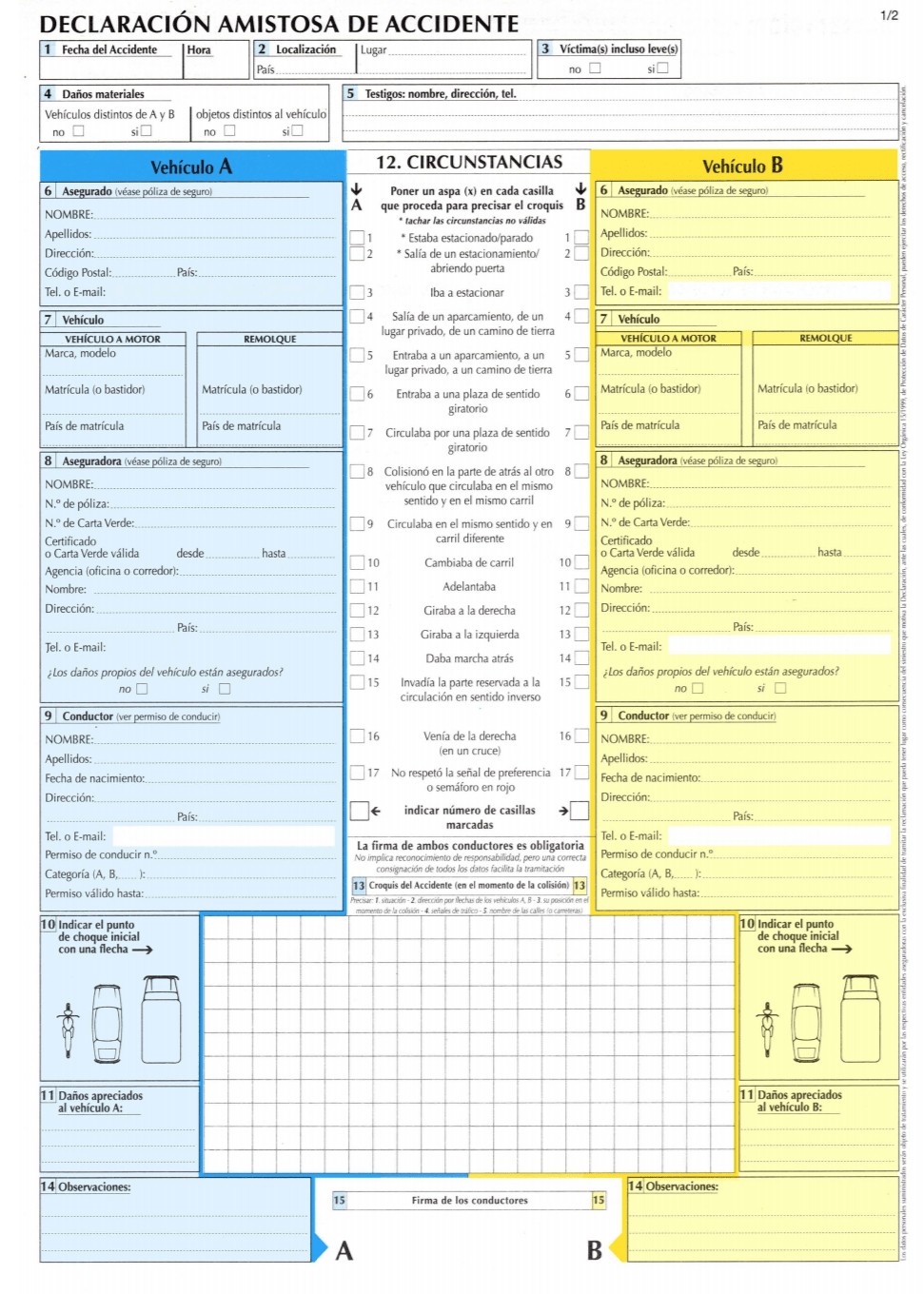We have been talking a lot about the European Accident Report Form, or “parte amistoso”, a so-called “friendly” report that should be completed in the event of an incident without injuries on the road. Now, we are going to answer the most common questions about the European Accident Report Form.
Remember, the form should be used in the event of an incident with material damage. It is not valid in the case of incidents with injuries, and the Guardia Civil or Police must complete the report in that case.
What happens if a report is filled out but there has been no incident?
Although it is a private document, it has probative value, since it reflects the circumstances in situ, so what is expressed in it must be considered true, as long as the contrary is not proven. When used to pretend the existence of an incident that did not happen, fraud is committed, a crime that can be prosecuted civilly and even criminally in serious cases.
Can the accident report form be used if the incident has caused injuries?
As we have mentioned, in those cases of traffic incidents with injuries or victims, the report cannot be used, whose application is intended for incidents that only leave material damage to the vehicles involved. If there are injuries, it is necessary to call the respective authority so that they can file the certificate of the incident.
Are there any disadvantages or risks when signing the form?
This document signed by the drivers involved in the incident can be subject to different assessments regarding its authenticity and validity. As it is usually filled out at the time of the incident, it may reflect the inexperience or nerves of the signatories, so it could contain errors or inaccuracies that later affect the claim.
In this sense, it is good to take into account that those involved are not obliged to deliver the document to the insurer immediately, since they have a maximum period of seven days to report the incident to the respective company. This period can be used in favour of drivers to calmly review the content and verify all the data carefully, without affecting the moment.
Should you sign the document, even if you do not agree with all of its content?
It is in no way advisable to sign this document if you do not agree with its content, since the purpose of this instrument is precisely to record the agreement of the parties regarding the circumstances and data of the incident. If any of the drivers signs it despite disagreeing with something placed on the form, it will make it more difficult for them to claim later. If an agreement is not reached, it is necessary to locate the authorities so that an incident report can be drawn up, in which they will indicate the circumstances of the event.
The form cannot be altered once it is signed by both parties.
Why is it advisable to take pictures of the incident?
Even when a form is agreed and signed, photographs are a good support to document the circumstances of the incident and record the details of the damage to the vehicles, their position at the scene, and other aspects of the incident.
What should be done after filling out the form?
Within a period of seven days after the incident, the report must be delivered to the insurance company to meet the requirement of declaring the incident before it, and start the respective processes for compensation.
Subsequently, the insurers will be in charge of the incident valuation, as well as the appraisal of the damages in the vehicles. Subsequently, they will determine the responsibility of the facts, as well as the compensation to which there would be place.






